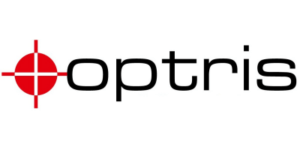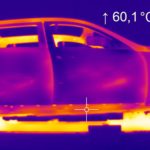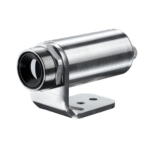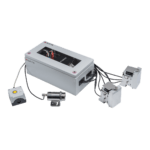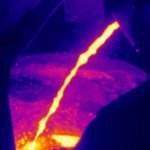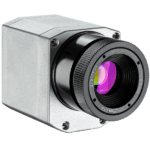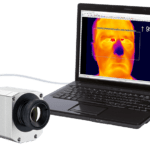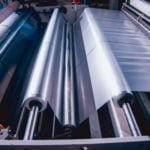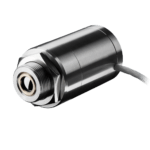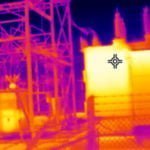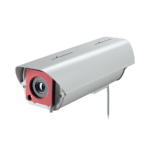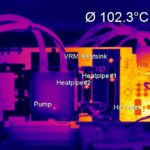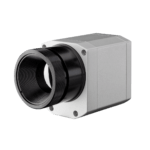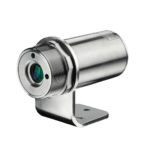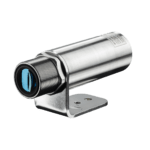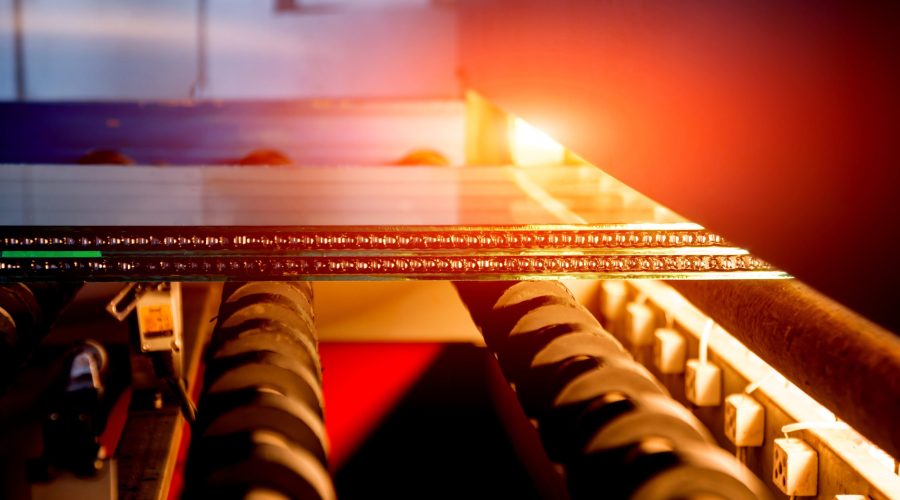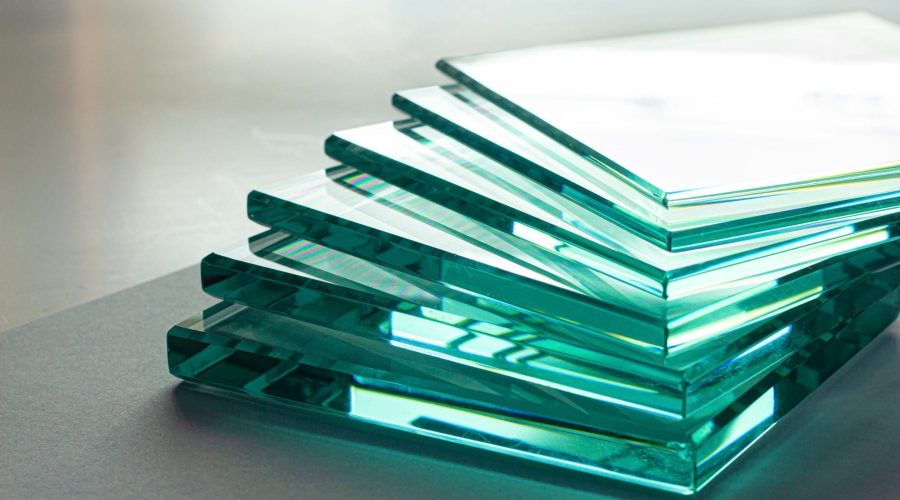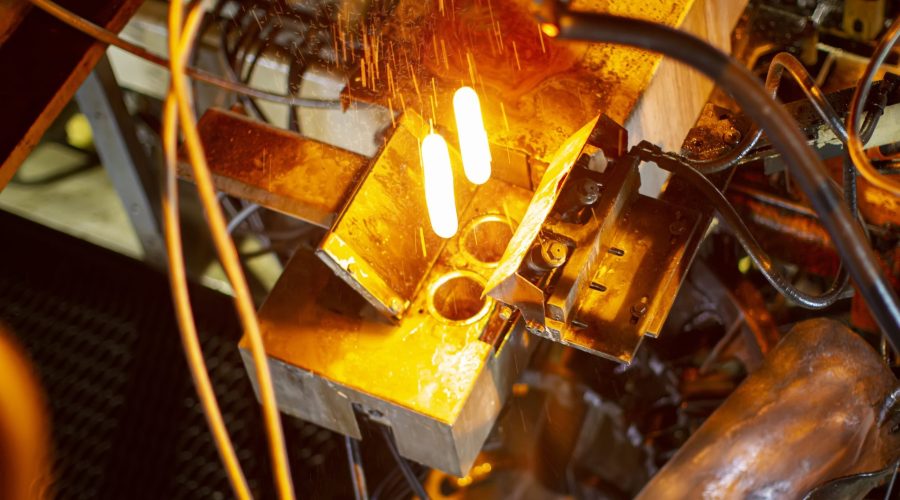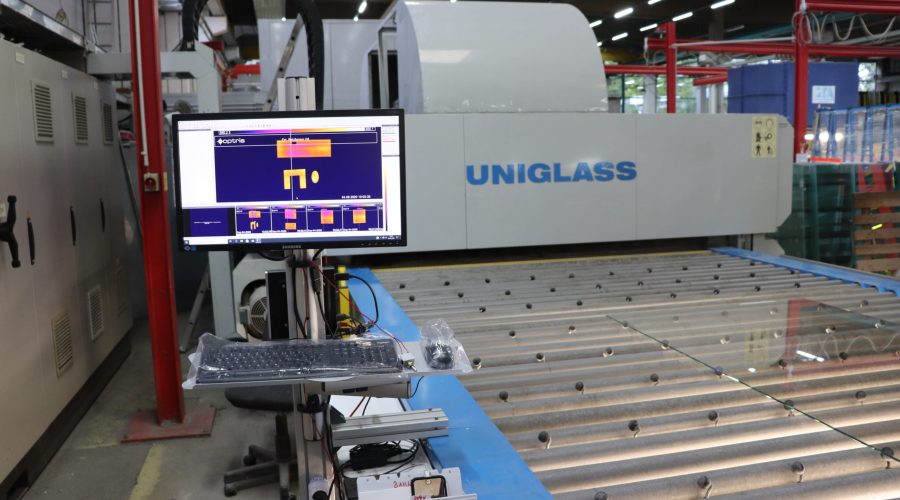Industries | Temperature monitoring in the glass industry
Reflections and Transmittance
Glass has been a mainstay of human life for centuries. Be it in the form of jewelry, the facades of buildings, or drinking containers, it comes in every size, shape and color imaginable. The most translucent material places very specific demands on non-contact temperature measuring technology.
As described in detail in our Infrared Basics brochure, reflection and transmittance are serious considerations. Depending on whether one is measuring the surface temperature of the glass, or the temperature within the glass itself, specific infrared thermometers or thermal imaging cameras are recommended by Optris.
Temperature Measurement of Glass
If you measure temperatures of glass with IR thermometers or the special IR camera optris PI G7 it implies that you take care of reflection and transmissivity. A careful selection of the wavelength facilitates measurements of the glass surface as well as of the deeper layers of the glass. Wavelengths of 1.0 μm, 2.2 μm or 3.9 μm are appropriate for measuring deeper layers whereas 5 μm are recommended for surface measurements. If temperatures are low, you should use wavelengths between 8 and 14 μm in combination with an emissivity of 0.85 in order to compensate reflection.
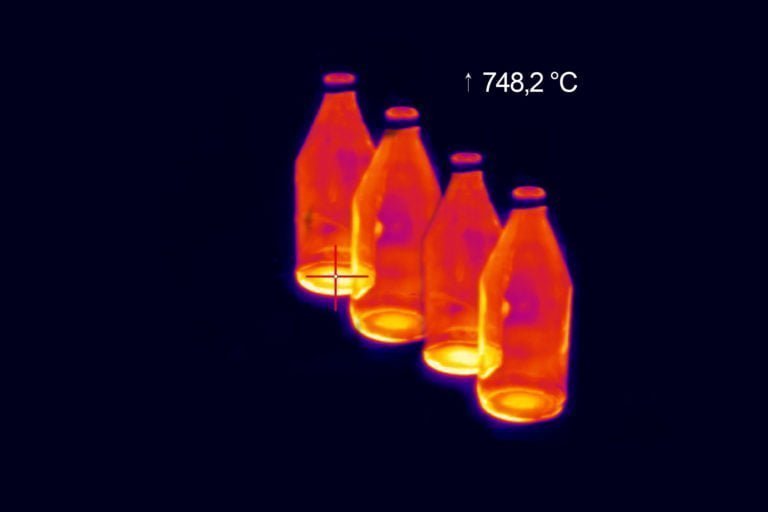
Line Scan with Compact Infrared Camera
Optris infrared cameras are delivered with license-free PIX Connect software. The software enables the cameras to operate as line scan cameras.
Line scanners are traditionally used in the glass in-dustry for various measurement procedures. In these devices, a point detector is coupled with a rotating mirror to consequently generate a linear optical scan of the object. These devices are bulky and expensive. Additionally, a high manual effort is required for setup.
When using an infrared camera as a line scanner, an arbitrary line is selected from the detector array. In addition to the more compact construction and the lower price, there are two significant benefits: the line to be scanned can be positioned and dimensioned anywhere using the software and the user receives a complete IR image effectively as additional information – these are important advantages, especially during system setup.
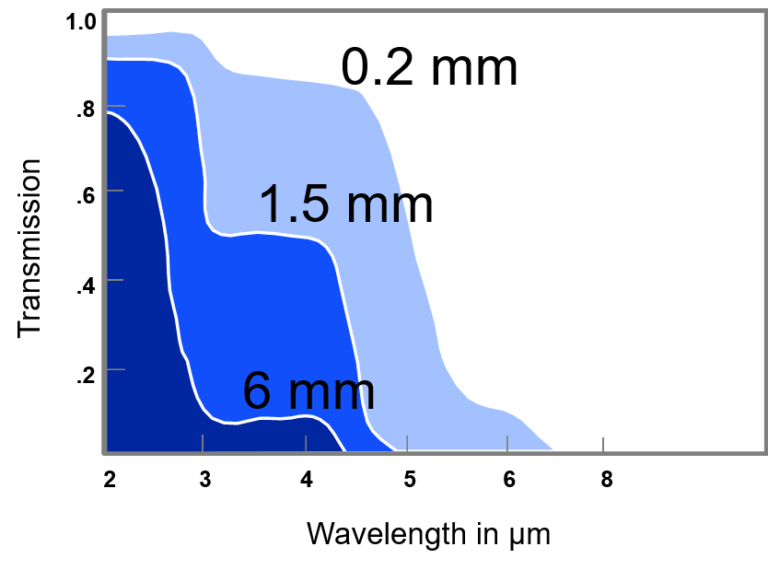
Temperature Influences Quality
The cameras can accurately measure surface temper-atures of moving measurement objects using minimal apertures. This function is of particular significance in the glass industry, since the glass temperature has a direct impact on the quality. Accordingly, temperatures are recorded at many points during the production process and transmitted directly to the process control system.
For example, the optris PI 640 G7, a special IR camera for glass applications, can scan the complete glass width using in the float process (Up to 4 m) with an 90° lens using the diagonals as scan line at a height of 1.7 m.
Using a subframe mode of 640 x 120 pixels and the same optics, data can even be captured with 125 Hz creating to a thermal image in any resolution.
Glass Applications
Single-Pane Safety Glass Production with Correct Temperature Measurement Technology
For the production of single-pane safety glass (SPSG), the cut and processed flat glass is heated in a furnace under continuous movement at over 600 °C. During the transport of the heated glass in the pretension zone, an infrared camera monitors the temperature distribution on the glass surface in line scan mode. Inhomogeneities can thus be compensated during the tempering process, in which the glass is air-cooled. The quality of the SPSG mainly depends on a homogeneous thermal treatment, which is ensured by the application of the correct temperature measurement technology.
Production Optimization in the Float Glass Process
In (partial) induction hardening an area is After the tin bath, the flat glass band has a temperature of about 600°C; the first infrared camera in line scan mode is applied for temperature monitoring at the transition to the cooling zone. The glass is transported through different cooling sections where at several points infrared cameras are installed to observe the whole process and to ensure an optimal quality.
Continuous Control during the Production of Container Glass
Container glass, meaning for example bottles in all sizes and shapes, must be repeatedly monitored for its process- relevant temperature during the production process.
When the molten glass exits through the feeder, the glass strand is cut. The thereby resulting molten glass gobs must have a temperature of about 1000 °C to ensure quality. Infrared thermometers and cameras with a short wavelength spectral response of 1 μm enable to measure the core temperature of the gob. With the innovative optris PI 1M a simultaneous measurement of multiple areas like three gobs in one image is possible.
Solutions for Low-E Glass Tempering
All kinds of glass, coated and uncoated, change their emissivity behavior in dependency of the angle of view. Especially low-E coatings show an unusual behavior. For a reliable and reproducible temperature measurement a referencing from underneath (uncoated glass surface) is necessary.
Ensuring the Quality of Laminated Safety Glass
Laminated safety glass (LSG) consists of at least two flat panes of glass, which are laminated in a clean room with a sheet of PVB film between them. The temperature of the film can be monitored with infrared thermometers.In the preheating furnace, the glass panes are heated in order to melt the film and simultaneously press the “sandwich” together, to prevent air pockets.
During the transition to the autoclaves, the temperature distribution is monitored with an infrared camera, in order to adjust the heating elements in the pre-lamination furnace for subsequent panes, when necessary
More Industries
Contact for Advice and Sales Worldwide
We offer comprehensive advice for your individual applications
Our experienced application engineers ensure competent and reliable customer service in the field. In addition, Optris works closely with numerous distribution partners worldwide.
International
Ferdinand-Buisson-Str. 14
13127 Berlin, Germany
Phone: +49 30 500 197-0
E-Mail: sales@optris.com
Internet: www.optris.com
Managing Director:
Dr.-Ing. Ulrich Kienitz
